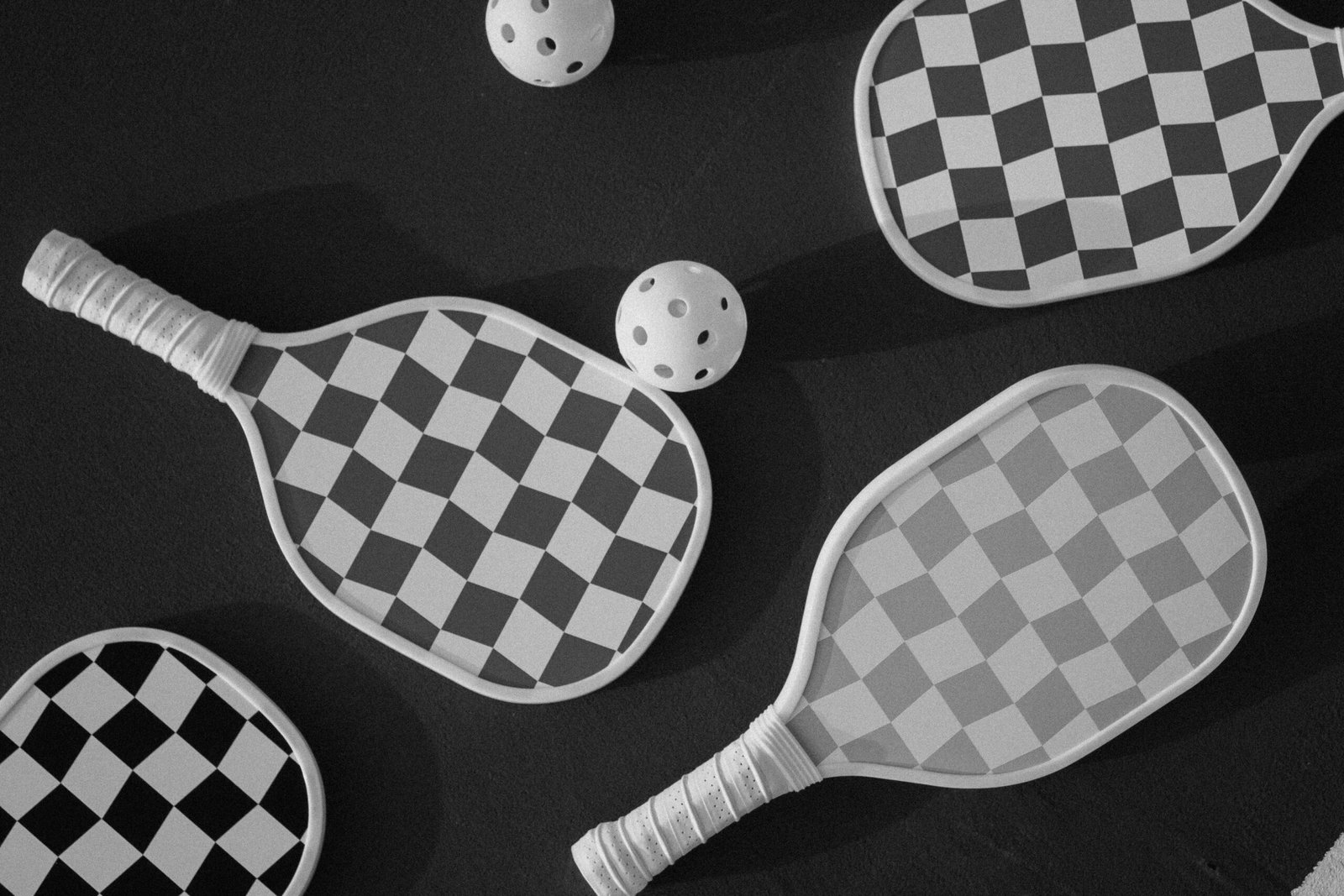Pickleball has taken the sporting world by storm. From community parks to professional tournaments, this unique game is attracting players of all ages and skill levels. But what is pickleball exactly, and why is it growing so fast? This guide will explore everything you need to know about the sport – from its humble beginnings to its current global popularity – and help you understand why pickleball is so addictive.
The Origins of Pickleball
Pickleball was invented in the summer of 1965 on Bainbridge Island, Washington, USA. Joel Pritchard, a congressman, and his friend Bill Bell, were looking for a way to entertain their families. Together with Barney McCallum, they created a new game using elements of tennis, badminton, and table tennis.
- They lowered a badminton net.
- They used improvised paddles shaped from plywood.
- They played with a perforated plastic ball, similar to a whiffle ball.
The name “pickleball” has two stories attached to it. One suggests it came from the “pickle boat” in rowing, a term used for a boat crewed by leftover oarsmen – similar to how the game was created by mixing different sports. Another story says the family dog, “Pickles”, would chase the ball around the court, leading to the name.
Whichever version you believe, the fact is the game quickly spread beyond Bainbridge Island. By the 1970s, the first organised tournaments were being held, and by the 1980s, pickleball had spread across the United States. Today, it is played worldwide, with international federations and professional leagues driving its rapid growth.
What Makes Pickleball Unique?
Pickleball is often described as a hybrid of other racket and paddle sports, but it has developed its own distinctive style. What makes it different?
- Court Size – the court is 20 feet wide by 44 feet long, the same dimensions as a badminton doubles court.
- Non-Volley Zone – the “kitchen” (a 7-foot zone on each side of the net) prevents players from volleying too close to the net, adding a tactical twist.
- Scoring System – only the serving side can score points, unlike tennis or badminton where both sides can.
- Pace of Play – games move quickly, with short, sharp rallies and constant movement.
- Accessibility – less physically demanding than tennis, but still highly competitive.
This unique blend is part of what makes pickleball so appealing to different generations.
The Equipment You Need for Pickleball
Getting started in pickleball is simple. Here’s a breakdown of the essential equipment:
Pickleball Paddle
- Originally made of wood, modern paddles are now built with lightweight materials like graphite, composite, or carbon fibre.
- They are larger than table tennis paddles but smaller than tennis rackets.
- Paddles have no strings, giving a firm hitting surface for better control.
Pickleball Ball
- The ball is made of hard plastic with holes.
- Indoor balls have larger holes and are slightly softer.
- Outdoor balls are more durable, with smaller holes to reduce the effect of wind.
Net and Court
- The net is 34 inches at the centre, slightly lower than a tennis net.
- Many clubs now have permanent pickleball courts, but temporary courts can be set up on tennis or badminton surfaces.
Shoes and Clothing
- Court shoes or trainers with lateral support are essential to handle side-to-side movement.
- Lightweight sportswear works best, especially clothing that allows quick movement.
The Basic Rules of Pickleball
Pickleball is easy to pick up, which is one of the reasons for its popularity. The basics are straightforward:
Serving
- Must be underhand with the paddle below waist height.
- Serve diagonally across the court into the opponent’s service box.
- Only one serve attempt allowed, except in the case of a let (when the ball clips the net but lands correctly).
The Two-Bounce Rule
The ball must bounce once on each side after the serve before volleys are allowed. This prevents serve-and-volley dominance and keeps rallies balanced.
The Kitchen (Non-Volley Zone)
- Players cannot volley (hit the ball out of the air) while standing in the kitchen.
- You may step into the kitchen to hit a ball that has bounced.
Scoring
- Games are usually played to 11 points (win by 2).
- Only the serving team can score.
- In doubles, both players serve before the ball passes to the other team.
Singles vs Doubles
Although pickleball can be played as singles, doubles is the most popular format.
- Singles – more demanding on movement and fitness, as each player covers the whole court.
- Doubles – more tactical, with players focusing on teamwork, positioning, and shot placement.
Strategies and Techniques in Pickleball
Pickleball is simple to start, but mastery requires strategy and technique.
Serving and Returning
- Aim for deep serves to push opponents back.
- Return deep as well, to gain court position.
Dinking
- A soft shot played into the kitchen, forcing opponents to play upward shots.
- Dinking rallies often occur at the net, testing patience and accuracy.
Volleys and Smashes
- Volleys are powerful when used outside the kitchen.
- Smashes are often used when opponents pop the ball up too high.
Positioning
- Doubles partners typically move together to cover the court.
- Controlling the net is key, as it allows for more offensive options.
Health and Fitness Benefits of Pickleball
Pickleball is not only fun but also a great way to stay active:
- Cardiovascular health – fast-paced rallies keep the heart rate up.
- Low impact – smaller court and underhand serve make it easier on joints than tennis.
- Weight management – burns calories effectively in short bursts.
- Mental health – improves focus, decision-making, and provides social interaction.
Pickleball vs Tennis, Badminton, and Table Tennis
| Sport | Court Size | Equipment | Scoring | Pace | Accessibility |
|---|---|---|---|---|---|
| Tennis | Large | Racket + ball | Both sides score | Longer rallies | More demanding |
| Badminton | Small | Racket + shuttlecock | Both sides score | Fast reactions | Moderate demand |
| Table Tennis | Very small | Paddle + ball | Both sides score | Rapid pace | Very accessible |
| Pickleball | Medium | Paddle + plastic ball | Serving side scores | Short, tactical rallies | Highly accessible |
Pickleball bridges the gap between these sports – more dynamic than table tennis but less physically intense than tennis.
Why is Pickleball Growing So Quickly?
Pickleball is often cited as the world’s fastest-growing sport, and the reasons are clear:
- Inclusive for all ages – from children to seniors.
- Community-focused – social doubles games encourage participation.
- Quick to learn – basic rallies achievable within minutes.
- Affordable – minimal equipment needed.
- Media attention – professional leagues, celebrity investors, and major tournaments are driving awareness.
Professional Pickleball
While many play casually, pickleball now has a professional side. In the USA, tours such as the Professional Pickleball Association (PPA) and the Major League Pickleball (MLP) showcase elite competition. Internationally, pickleball federations are emerging, and there is even talk of future Olympic recognition.
FAQs About Pickleball
Is pickleball easy to learn?
Yes, beginners usually rally within their first session.
Is pickleball only for older players?
No, while it is popular with seniors, younger athletes are increasingly joining due to the sport’s intensity and competitiveness.
Can you play pickleball on a tennis court?
Yes, temporary courts can be marked on tennis courts with portable nets.
How long does a game last?
Most games last 15–25 minutes, depending on scoring and rally length.
The Future of Pickleball
Pickleball’s future looks bright. As facilities expand and media coverage increases, more people are discovering the sport. With its mix of accessibility, community spirit, and competitive depth, pickleball is set to continue its rise worldwide.
Final Thoughts
So, what is pickleball? It is a paddle sport that blends the best parts of tennis, badminton, and table tennis into a fun, accessible, and strategic game. From its backyard origins in 1965 to its position as a global sport today, pickleball has become a favourite for millions.
Whether you are a complete beginner or an experienced athlete looking for something new, pickleball offers a perfect balance of fun, fitness, and social connection. All you need is a paddle, a ball, and a court to get started – and you may quickly find yourself hooked.

